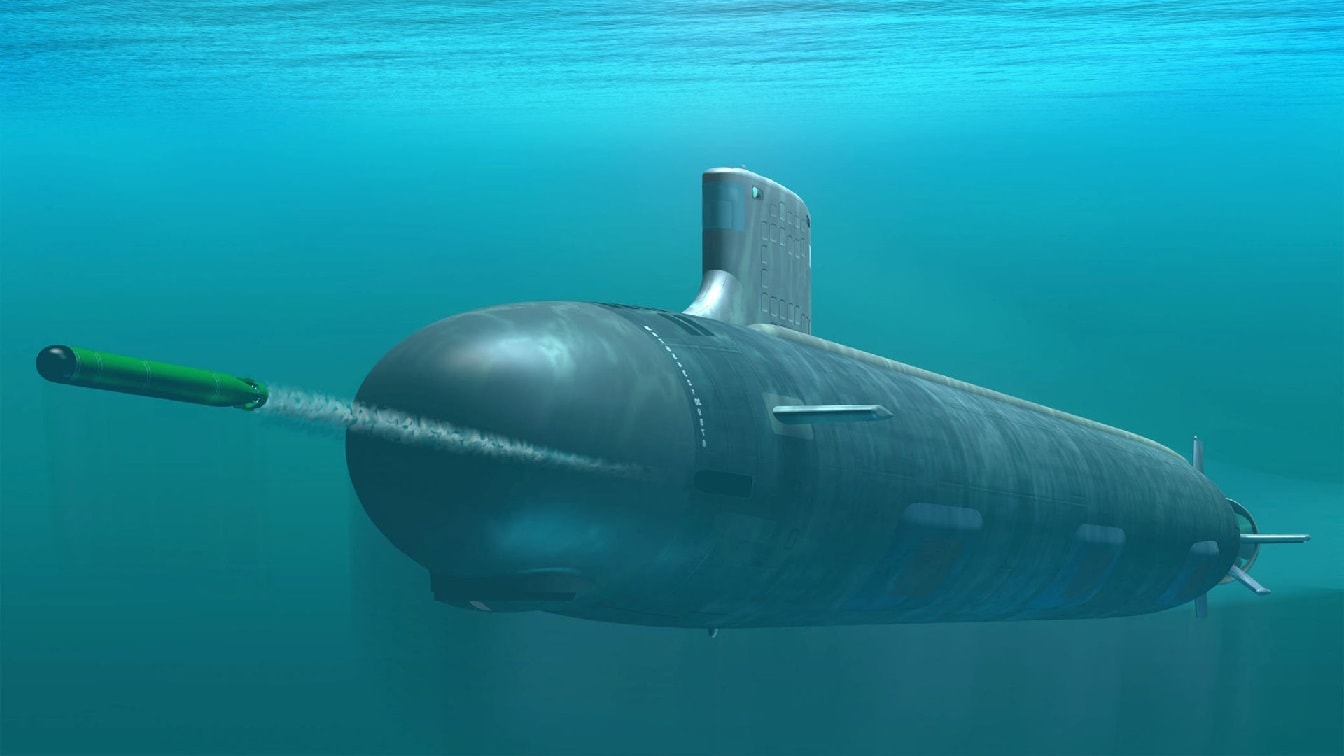Over the last year, both Moscow and Pyongyang have issued various threats pertaining to nuclear warfare. As tensions are continuing to ramp up between Washington and these rogue allies, the role America’s nuclear triad plays in deterrence appears even more significant. Three distinct legs make up the nuclear triad that ensures “mutually assured destruction.” Land-based nuclear missiles, nuclear-missile-armed submarines and strategic bombers diversify the nation’s nuclear delivery portfolio to ensure retaliation in light of an attack.
The Navy’s sea-based nuclear leg is perhaps the most essential
Perhaps the least glamorized and most covert leg of the nuclear triad are submarines.
Since these underwater vessels are extremely difficult to detect and destroy, they are often considered the most essential of the triad. Currently, 14 Ohio-class ballistic missile submarines are capable of launching up to 20 nuclear-tipped ballistic missiles.
The latest generation SSBN is the Trident II D5 missile, which can travel more than 7,000 kilometers. Each Ohio-class submarine spends an average of 77 days submerged at sea before returning to shore for roughly one month of maintenance.
Crews rotate patrols to ensure that these virtually undetectable and super-armed vessels remain hidden at sea at all times.
How can sailors endure the harsh conditions that submarine life requires?
Not all humans are capable of living in cramped quarters, miles beneath the surface and without outside interaction for months at a time.
For submarine crewmen, however, this is a reality.
In order to work on a submarine, applicants must first go through a series of intense psychological evaluations and courses to ensure they are right for the job. If a sailor struggles mentally, putting them on a nuclear-armed submarine is not only dangerous for those onboard but also reckless to the rest of the world.
While the Navy does it best to make sure submarine crewmen are mentally fit to serve in such extreme conditions, mishaps do happen.
James Thompson, a former Electronics Technician described a situation where a coworker suffered a mental break aboard a U.S. military submarine in an interview with The Aviation Geek Club:
‘During a 6-month deployment, we had a sailor that had a mental break during covert ops (basically we were supposed to remain as quiet as can be for weeks/months in a row to do surveillance). I happened to be on watch in the engine room when this sailor came back in the engine room and grabbed a wrench and started bashing the cabinets that controlled the engine room equipment. When I came across him, he was ripping parts off of one of the cabinets that provided backup (local) control of the reactor. He ended up cracking the “local control” switch for the control rods before I was able to intercept and subdue him.‘Long story short, we had to divert for repairs as soon as we were able to do so (we also had a bad bearing in one of the Main Sea Water pumps, that resulted in a reduced ability to maintain higher propulsion speeds), so we had to go “off station” and get parts to conduct repairs. As soon as we were in port for repairs, that sailor was taken off due to his mental issues.’
Maya Carlin, a Senior Editor for 19FortyFive, is an analyst with the Center for Security Policy and a former Anna Sobol Levy Fellow at IDC Herzliya in Israel. She has by-lines in many publications, including The National Interest, Jerusalem Post, and Times of Israel. You can follow her on Twitter: @MayaCarlin.
From the Vault
‘You Really Oughta Go Home’: F-22 Raptor Stealth Fighter Flew Under F-4 From Iran

